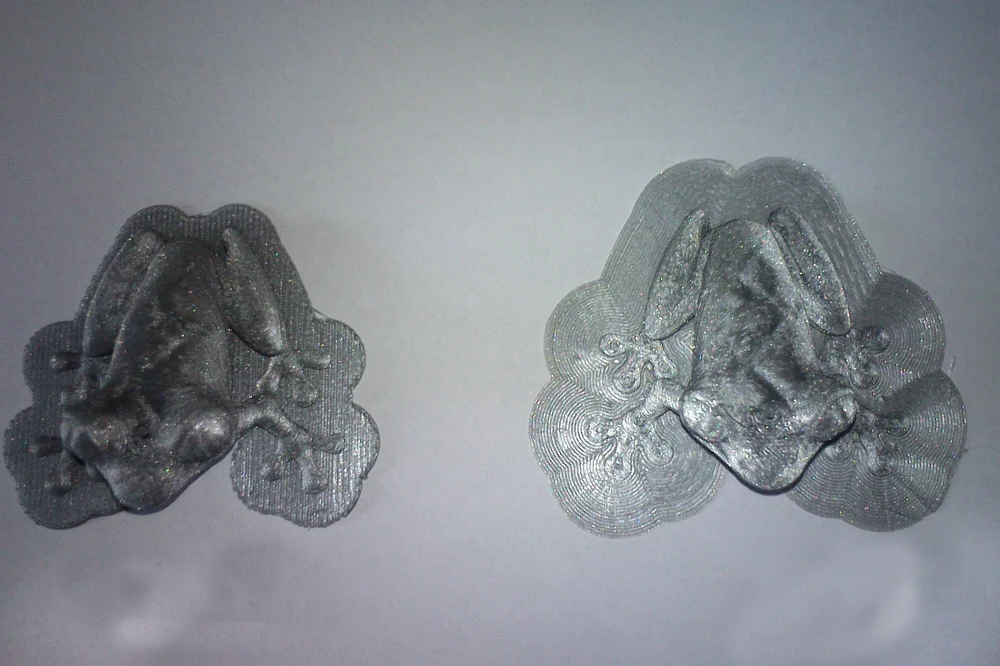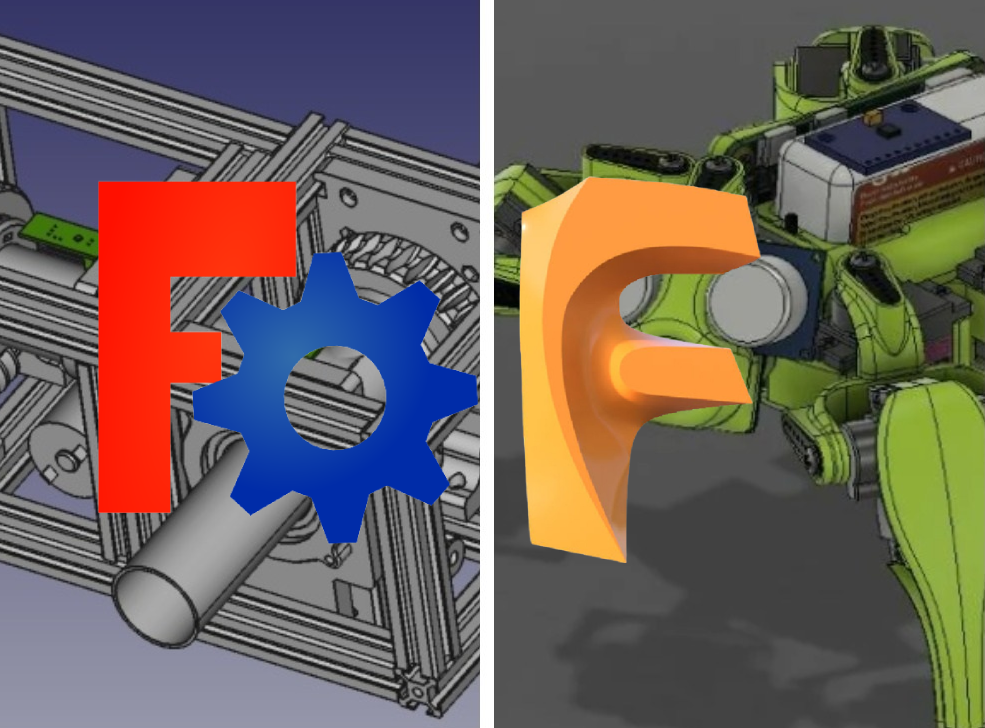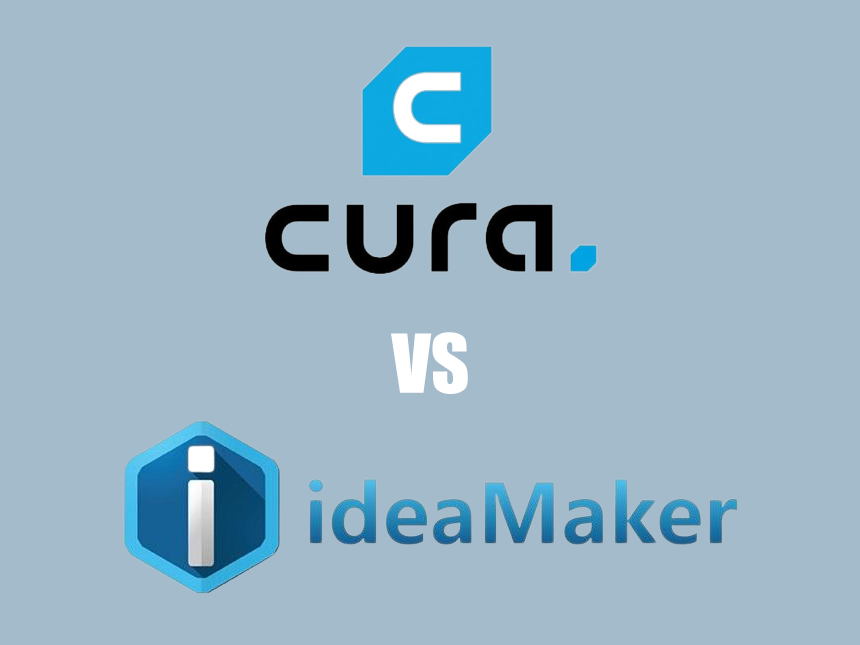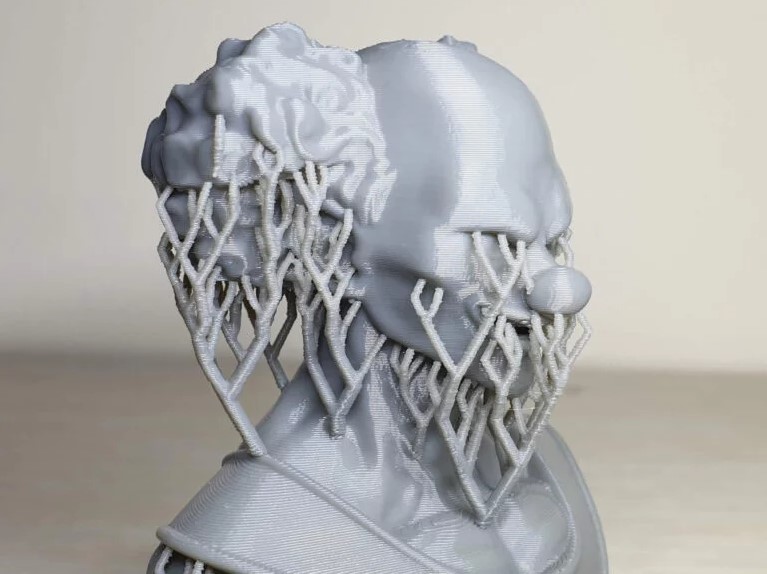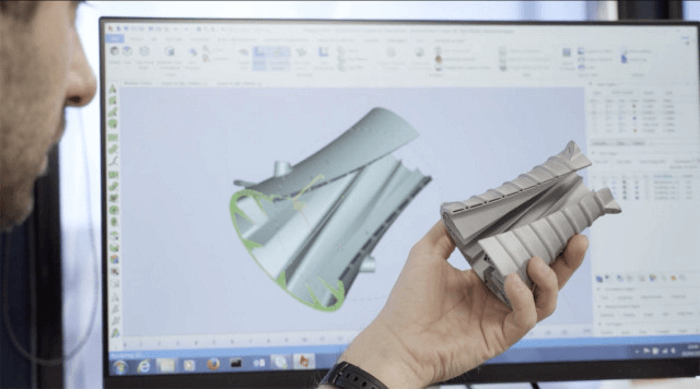

If you’re getting into 3D printing, there’s always the question of which slicing software to use. People are often torn between Simplify3D and Cura as they start experimenting with prints since these are the two of the most popular software for hobbyists. Technically, they do the same job: converting your files into G-code for the 3D printer you’re using to understand.
However, they’re also different in terms of the app interface & layout, features, cost, compatibility with 3D printers, and more. Consequently, a Simplify3D vs Cura comparison makes sense as then you know which slicer between the two best suits your printing needs. Also, while they are suitable for hobbyists, it doesn’t mean advanced users and professionals cannot use them.
As a piece of slicing software, Simplify3D is one of the most impressive options in the market. It certainly works well for hobbyists, but you need to be sure of its functionality and benefits before deciding to purchase it. Consequently, examining the cost, user interface, features, updates, and a few other aspects of the software is only natural.
Simplify3D is the product of a company by the same name. You can get the software as a one-time purchase, and generally, it provides good value for money. Compared to professional-level 3D slicers, you pay much less for this option. However, the same cannot be said when comparing Simplify3D to Cura.
The software is currently on version 4.1, with version 5 being in the rumor mill for so long that some people won’t believe it’s coming until they actually see it. That said, there isn’t much to complain about, even with version 4.1. There are some outstanding features, and for a lot of users, it’s worth every penny.
Nevertheless, if you’re going to find out everything it has going for it, you will have to look at each aspect of the software, which is what we do below.
Whenever you look at a potential purchase, whether software or otherwise, the cost will likely be one of your top considerations. Currently, Simplify3D sets you back $149 as a one-time purchase.
In terms of value for money for the hobbyist, the cost of the software doesn’t seem bad. As such, most of the previous users of the software don’t have any qualms with it. Nevertheless, compared to Cura, it’s still a lot more expensive.
Also, you can get a better deal depending on your purchase circumstances, e.g., when you’re buying in bulk. However, this often involves having to contact Simplify3D representatives for the details of the discount.
With a paid piece of 3D slicing software, you can’t afford to get the compatibility wrong. There are tones of options in the market for hobbyists that fit various fields, including education, prototyping, manufacturing, jewelry, and art. There are even some 3D printers for architects that are used for construction projects and modeling.
However, if the software doesn’t work with your particular model of 3D printer, then it makes little sense to have it, especially if you have to pay to own it. Fortunately, with Simplify3D, you have a 95% chance that the printer you own is compatible as per the claims by the company.
That said, you can account for that 5% of uncertainty in terms of compatibility by using the Simplify3D website. All it takes is for you to enter the printer name into the website, and it will tell you whether the software will work for you or not.
The Library of Congress dates STL files as far back as 1988, and they have thus been available for longer than the other formats. This might explain why they are the most commonly used file type. Simplify3D is, of course, compatible with STL, and it works with OBJ and 3MF files as well.
Nonetheless, it still falls a bit short because while it can export X3G or X3D file formats to the printer alongside a G-code file, it doesn’t support their use. Also worth noting is that File Info asserts that X3G files are only used in 3D printers with MakerBot or Sailfish firmware.
As for the user interface of the Simplify3D software, there are both positives and negatives. Starting with the latter, the user interface is fairly complicated. It’s a similar design to some of the complex video and photo editing programs in the market.
Every single operation that you can do with the software is incorporated into 12 tabs. This makes it practical since all you have to do is locate the functions you want to use. However, therein lies the hard part. With so many icons and functions to look at and choose from, it can be overwhelming, especially if you’ve never used a slicer.
Given that all the functions are in one place, it’s only a matter of time before you learn them all. A closer look at the 12 tabs, and you’ll notice they are subdivided into functionality sections. Examples of this include supports, temperature, infill, layers, and more.
Details are provided about features when you hover over an icon. Once you’ve familiarized yourself with the subsections and the kinds of functions included in each, the user interface becomes a lot simpler to navigate.
Lastly, the fact that you can’t make any adjustments to the print design as you preview it will likely be an annoyance in the latter stages of use and is one of the major downsides. It would be a tad more practical if you could make your adjustments in real-time. That way, you wouldn’t need to enter and exit the preview mode often. However, that’s not what you get.
Worth noting is that ideally, you should know how 3D printing works before using the Simplify3D software. Users recommend the 3D Printing for Dummies book because it offers information about types of 3D technology and how to get better success when printing. This information should help you make sense of some of the aspects of the user interface, even if you’re still new to printing.
The features are one area where the Simplify3D software really starts to shine. A few examples of these impressive features that we singled out are:
As for the functionality, Simplify3D is well suited to most hobbyists’ needs. It’s quite effective and is even optimized to give you great prints.
Another positive about the functionality of Simplify3D is how easy it is on computer resources. It maxes out at using just 2GB of RAM, unlike most other slicer software options that are resource-intensive. Consequently, if you invest in the software, you may end up saving some money on the computer you use for 3D printing projects if you don’t already have one.
The software’s functionality does have some downsides as well, the most glaring of which is a lack of upgradability options.
If it were open-source with a market for plug-ins and add-ons, you wouldn’t have to wait years for added functionality. Instead, you would download some of the extra functionality from third parties. However, as it stands, you have to wait for official Simplify3D iterations from the software developer, and these tend to take a while before they’re released.
Simplify3D updates can take years before they are released, and even when they eventually get into the market, you’ll have to cough up some cash to get them.
However, this is also a guarantee that the developer is quite meticulous with the offering, and the result is often fewer bugs. That said, even if there are fewer bugs to deal with, you find that the existing ones take longer to be resolved.
Additionally, without as many updates, you’ll find that each release tends to have a lot more features compared to the last iteration.
In summary, the software’s positives include:
As for Simplify3D’s downsides, they are:
Ultimaker Cura handles close to one a half million print jobs weekly. Given this kind of popularity, it obviously has some things going for it.
Ultimaker typically makes 3D printers, but the Cura software is also one of their products. While they do sell their printers, they provide the software free of charge. Their main business isn’t in the software, and consequently, it does have some shortcomings, although the developer has gotten around most of them by making it open source.
Nonetheless, here’s what to expect where the cost, user interface, features, updates, and a few other aspects of the software are concerned.
As stated above, the Cura software is free. This includes the initial software download and other updates you get.
Also, the program is open-source, meaning that all the source code for the software is provided. That way, users can make their own adjustments if they so desire. Notably, many users have already done this, which brings about extra functionality and features not included in the initial download. These features are added to an online marketplace, and you can download them for free as well.
Nevertheless, to say that the software costs nothing would be untrue. It does cost you a lot of your computer’s resources, including the RAM and ROM. This is made worse by all the plug-ins and downloads, and if you have a low-specs computer, it’s probably not going to handle the program very well.
Notably, the free Cura program isn’t the only version of the software available. You have a paid option that comes as part of the Ultimaker Essentials suite of programs. The entire suite is $300 annually, and although you can understand the price due to the multiple programs and the functionality they come with, the cost is quite steep.
Nevertheless, if it’s just the slicer you want, getting the whole suite may not make sense.
Despite initially working only with Ultimaker devices, the list of compatible devices grows steadily with each subsequent update. One might even say it’s close to or on par with the compatibility of the Simplify3D software.
Unfortunately, there isn’t a list that you can look through for clarification on whether your printer is compatible or not. However, whether you’re using Creality 3D printers or other options from different manufacturers, you can always download it and try it yourself to see if it works.
According to reviews, one extremely popular Creality printer is the Creality Ender 3 Pro. It’s designed with a Meanwell power supply that can provide sufficient and stable power for all printing functions, including heating the hotbed. Furthermore, it comes with a print-resume function for when you lose power mid-print.
The download will cost you some time, but it’s the only surefire way to find out.
The available file formats are STL, OBJ, X3D, and 3MF. These come with the original version of the software. However, you’ll notice that the X3G format is left out. That said, if you need it, there’s a plug-in available, and you can download it from the Cura marketplace.
As for the user interface, Cura seems every bit like a beginner piece of 3D slicing software. It’s one of the most intuitive slicers in the market due in part to a highly customizable but simplistic design. The top toolbar, for instance, is only divided into prepare, preview, and monitor sections.
Even the other two other toolbars included in the interface are simple and direct. This leaves more space in the middle of the interface for reviewing your project. Since most of the basic controls and functions are uncluttered on the screen, you could learn how to use them in a matter of days. Nevertheless, this design language does come at a cost.
Not all the features and functions will fit in the three toolbars. Consequently, some of Cura’s functions are hidden, and it may take some effort to find them when you’re new to the software. However, you can configure the features and functions for easier use once you get used to the slicer.
Compared to other slicers, including Simplify3D, Cura doesn’t seem to have as many native features. This does limit its usability during the initial stages of ownership. Nevertheless, since it has all the basics and features fairly customizable functionality, you should still find it possible to create impressive prints.
The availability of the online marketplace and the fact that it’s open-source does help bridge the functionality gap between this slicer and others in the market.
Multiple software developers have even created the features they want in the program and made them available for download on the marketplace. One example of this is where X3G file support is concerned. While you can’t get it with the original software, there’s a plug-in you can download for the same.
If you were to look at the full suite of plug-ins and add-ons available in the market, you’d probably find a few unique features as well.
On the flip side, the marketplace and simplistic design do cause some functionality issues as well. Notably, there’s no upper limit on the size of the plug-ins as well as the resources they use once they’re on your computer. Consequently, those with low-specs computers with limited RAM and ROM may struggle with the software. It can even lead to crashes when you least expect it.
Updates are one area that Ultimaker hits the ball out of the park. Although there’s no set schedule, it’s hard to go even a few months without an update for Cura software. These add extra functionality to the software and come with bug fixes as well. Consequently, Cura is continuously improving. The Cura community of users can even chip in and help make some updates and changes since the software is open source.
Cura’s positives can be summarized as:
Ultimately the user experience you’ll get from these two pieces of software is unique, which is why it’s important to look at the differences and how Cura and Simplify3D compare to each other.
This pops up as a major difference when comparing Cura to Simplify. Simplify3D is developed by a company by the same name whose sole focus is to make and improve the slicer. Since all their resources go into developing the program, it might explain why simplify3D has better-inbuilt features than Cura.
Cura, on the other hand, is a product of Ultimaker. While the company is able to produce an impressive slicer, it has to split its resources between making the software and making 3D printers. Since it sells the latter and gives the former to users for free, most people assume that making printers tends to take precedence over the software. However, there’s no way to ascertain that this is true, as bugs are fixed relatively quickly, and updates are frequent.
The user experience for these two programs is another differentiator, and there are a few examples of this. The interface, for instance, varies widely. Cura is designed to be beginner-friendly, and you can see that in how simplistic it looks. It even seems like it only takes a couple of days of practice to start using software proficiently.
Simplify3D may be a little more complicated but not by much, making it still usable at the beginner level. The fact that it provides extra information as soon as you hover over an icon certainly helps.
Next, Cura seems to be more customizable and configurable, especially in relation to the slicer homepage.
The processing speed is another area of the user experience that may be worth mentioning in the Cura software vs Simplify3D debate as a difference. Even though it only uses 2GB of RAM in operation, Simplify3D seems optimized for fast performance.
Cura, on the other hand, is a different story. It’s a taxing program to run on a computer with limited resources. This can lead to lag, and sometimes the software takes twice as long while processing segmented layers.
Notably, the plug-ins available in the marketplace can exacerbate this problem since they’ll take up more of your RAM and storage space.
Lastly, there are the support structures provided. These play a massive role in most 3D printing projects, and the support structures provided by these two slicers couldn’t be more different.
Cura on one end has automatic support structures that the user has no control over. Even if you see that the support structures aren’t optimally placed there’s nothing you can do to change that. Additionally, they’re tricky to remove. This results in a few uneven edges once you’re done and can make finishing the print more complicated than it needs to be.
When comparing Cura vs Simplify3D support removal, you find the latter lives up to its name and makes the user’s work a lot easier. The supports don’t need much effort to come off the print, and they leave smooth edges. Furthermore, they are customizable even before the start of the print process.
The printing results quality is another area where Simplify3D performs significantly better. This may be due to the added controls and modifications allowed by the program at the layer level that Cura cannot match. Furthermore, the fact that you have to pry the supports off the print when using Cura may diminish the print quality.
Of course, the conclusion for a Cura software vs Simplify3D comparison should tell you which one is better. However, the answer isn’t as simple as saying it’s either Simplify3D or Ultimaker Cura. They may be quite different and have different advantages, but you still can’t say one of these pieces of software is better than the other.
Cura is great as a beginner slicer since it’s free, simple-to-use, and has a lot of the functionality you expect in slicers that you have to pay for. Additionally, given the consistent updates and the availability of an ever-growing suite of plug-ins, the upgradability of this option is impressive.
Simplify3D is great for beginners and some advanced hobbyists and will give you better printing results. It’s a little more complicated for a beginner to hack, but it is doable. Also, the one-time cost isn’t so bad once you compare it to the value you’re getting.
Once you’re done with the Simplify3D vs Cura comparison, you’ll likely conclude that both are excellent options. If you’re just getting into 3D printing, the Cura seems like an obvious pick since you get to learn how to use a slicer for free, and the functionality is way above the level of free software.
However, faster processing times, customizable layer processes, and customizable supports are likely functionalities that you’ll come to appreciate and want over time, therefore, making Simplify3D an excellent option. That said, your current priorities and needs will likely do the deciding for you on which slicer you should pick between the two.
